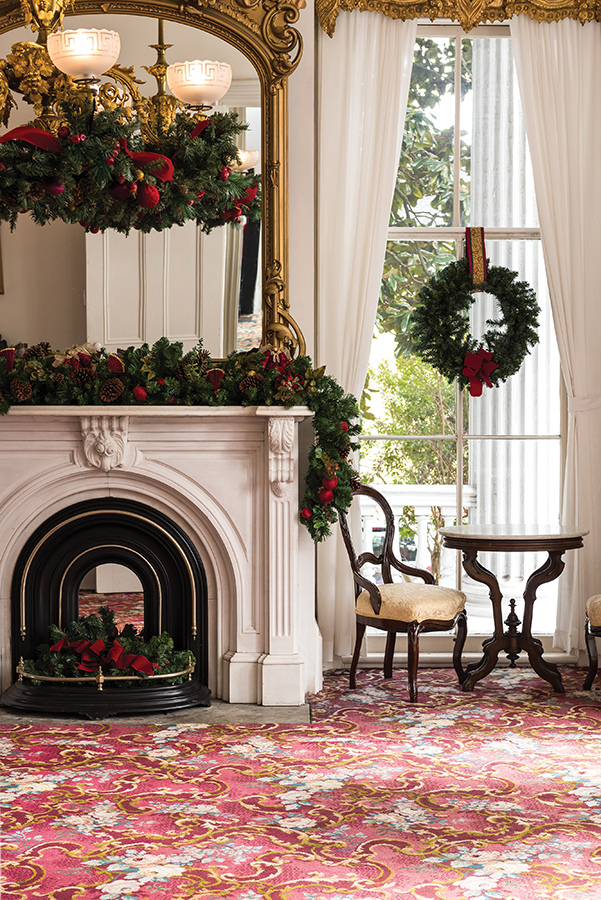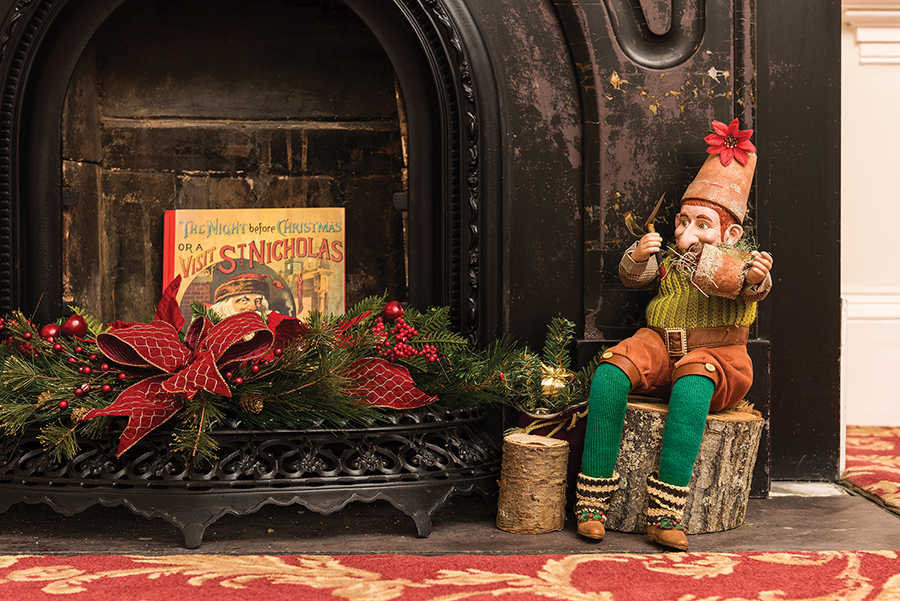Christmas at the Bellamy Mansion
The iconic symbol of Wilmington’s past
By William Irvine • Photographs by Rick Ricozzi
The Bellamy Mansion is a stately survivor. Since its completion in 1861 it has endured occupation by Union officers during the Civil War, arsonists’ attempts to burn it to the ground in 1972, and most recently the ravages of Hurricane Florence. And yet it remains the crown jewel of domestic architecture in Wilmington, a considerable feat in a city that boasts eight historic districts and more than 6,000 properties on the National Register of Historic Places.

Wilmington in the mid-19th century had seen better days. A series of major fires in 1840, 1843 and 1845 left much of its Colonial past in ruins. But with the newly empty lots came a building boom. “Formerly the town had a rather shabby appearance, and reminded one of a certain Yankee town, in which it was said the people built old homes,” reported a Rhode Island journalist in an 1846 Wilmington newspaper. “But it has been almost destroyed by the numerous fires . . . and the buildings erected . . . especially of the last seven years, are of much better character than those that have passed away; and many of them are elegant.”
And elegant they were. Wilmington was importing architects from New York and Philadelphia to design some of the city’s most impressive structures. Philadelphian Thomas Walter was hired to build the stunning Gothic Revival St. James Episcopal Church in 1840. Fellow Philadelphia architect Samuel Sloan was working on plans for the First Baptist Church on Market Street. And New York architect John M. Trimble was at work on the neoclassical Thalian Hall, which upon its completion in 1858 was the largest theater south of Richmond.
It was in this heady mix of public projects that Dr. John D. Bellamy envisioned his own house at the corner of Fifth Avenue and Market Street. The scion of a prosperous family in the South Carolina low country and a Secessionist, he came to Wilmington in 1835 to begin his medical training with Dr. William James Harriss, and soon fell in love with his daughter, Eliza, whom he married after his medical training in Philadelphia. By the late 1850s Bellamy was a prosperous Wilmington merchant as well, with two properties out of town — the 10,000-acre Grovely Plantation in Brunswick County, and Grist, a large pine forest in Columbus County, where he ran a successful turpentine distillery. He was also a director of the Bank of Cape Fear and the largest stockholder in the new Wilmington and Weldon Railroad. But after several years in a residence on Dock Street, the family was in need of a large house. The 1860 census reveals that in addition to Eliza and John and their eight children — ages 1 to 19 years old — the household also included nine slaves: a man, three women and five children.
It was the Bellamys’ eldest daughter, Belle, who is credited with the design of the mansion’s flamboyant colonnade — inspired by a house she saw in Columbia, South Carolina — which she sketched on a napkin for her father, who shared it with the architect-builder James F. Post and his associate Rufus Bunnell. The resulting house is an eclectic combination of Greek Revival, Italianate and Neoclassical styles, a 22-room, four-story frame house on a raised basement topped with a belvedere, which was used as a lookout in 1864-65 during the battles at Fort Fisher.
The construction of the house was entirely due to Dr. Bellamy’s employment of enslaved craftsmen — brick masons, carpenters and plasterers, as well as several freed black artisans, self-trained skilled workers who created the ornate plaster moldings of the interior and the woodwork throughout the house. Architectural historian Catherine Bishir, the author of the definitive history of the house, The Bellamy Mansion, describes the recently finished interiors: “The main rooms glowed with color — flowered carpets in the parlors, mahogany furniture “done up in red silk damask,” and at the immense windows, brass cornices, lace curtains and heavy silk draperies of red, green, or gold. White marble and black slate mantels framed the fireplaces, and mirrors in gilded frames reflected the gas light of brass chandeliers. In the wide center hall, the mahogany-railed stair was quieted by a ‘beautiful velvet carpet’ held in place by silvery rods.”

Despite the ravages of Florence — the belvedere roof was partially torn off, sending water cascading through all five floors of the core of the house — the house survives, and will celebrate its 157th Christmas this year. “The site is iconic to Wilmington’s past,” says Gareth Evans, the Bellamy Mansion’s director since 2010. “It has played a role in the Civil War, 1898, and many pivotal moments in regional history. The prominence of its position and appearance makes the mansion a symbol of Wilmington.” b
William Irvine is the senior editor of Salt.


